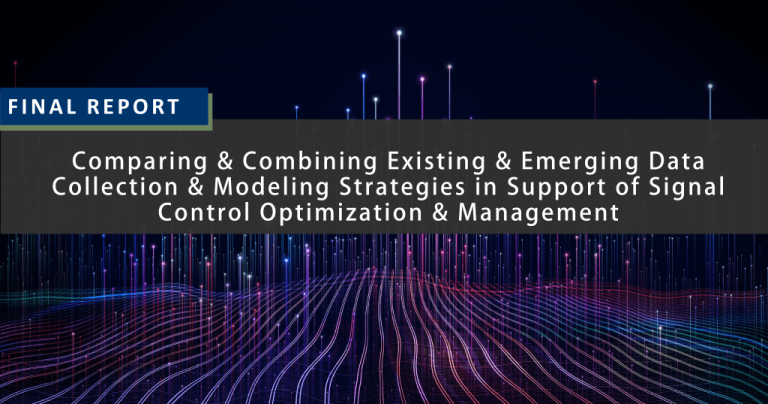Comparing and Combining Existing and Emerging Data Collection and Modeling Strategies in Support of Signal Control Optimization and Management
Research Team
Mohammed Hadi, Florida International University
Virginia Sisiopiku, University of Alabama at Birmingham
Project Description
For decades, traffic signal management agencies have used signal timing optimization tools combined with fine-tuning of signal timing based on field observations in their updates of time-of-day signal timing plans. These traditional signal optimization methods and tools use very limited amount of data and depend on default values in the signal timing optimization/simulation tools to estimate network performance under different signal optimization strategies. In recent years, new data collection technologies are emerging including high resolution controller data, more advanced detection technologies such as video image detection that are based on vehicle tracking and possible integration with microwave detectors, automatic vehicle-based identification technologies, third party crowdsourcing data, connected vehicles, and connected automated vehicles data. The objective of the study is to propose methods and algorithms to combine data collected from existing and emerging sources with enhanced models and optimization algorithms to optimize and manage signal operations.
The project started with a review of the literature and a comprehensive survey of practice that aimed at documenting current signal timing practices of operating agencies responsible for traffic signal control in small, medium, and large size cities in the Southeast United States. Then, the study developed a method for the calibration and validation of microscopic simulation models of arterial networks utilizing high-resolution controller data combined with a two-level unsupervised clustering technique and multi-objective optimization for simulation model calibration. The study demonstrated the benefits of this methodology. Based on the results from this calibration, the study compared the performance of two signal timing optimization methods based on macroscopic simulation and microscopic simulation with and without fine-tuning their parameters based on high-resolution controller data.
The next step was to use a combination of two artificial intelligence approaches, namely Recursive Partitioning and Regression Decision Tree (RPART) and Fuzzy Rule-Based System (FRBS) to recommend modifications to signal timings during non-recurrent events such as incidents, construction, surge in demands, and device malfunctions. This was followed by comparing the performance of the resulting plans from the above methods with those obtained using a simulation-based optimization methods to select the signal timing parameters during non-recurrent conditions.
This study also investigated the use of clustering analysis, multi-resolution modeling (MRM), and optimization techniques in the development of plans on alternative routes to accommodate diverted traffic during freeway incidents. An important aspect of the methodology was the calibration of the utilized mesoscopic simulation-based MRM based on the increase in demands and travel times on alternative routes using data from third party vendors. Another important aspect was the use of microscopic simulation-based optimization of signal timing utilizing a multi-objective optimization that jointly minimizes the delays and maximizes the throughputs considering the whole intersections as well the specific impacted movements on the alternative routes.
Product
Model – Developed a hybrid machine learning and fuzzy logic model for signal timing selection under non-recurrent conditions. The methods can be used by signal agencies to better select signal timing, particularly special signal timing plans that can be activated in real time during non-recurrent events such as incidents and weather events. The methods are based on data, tools, and optimization algorithms.
